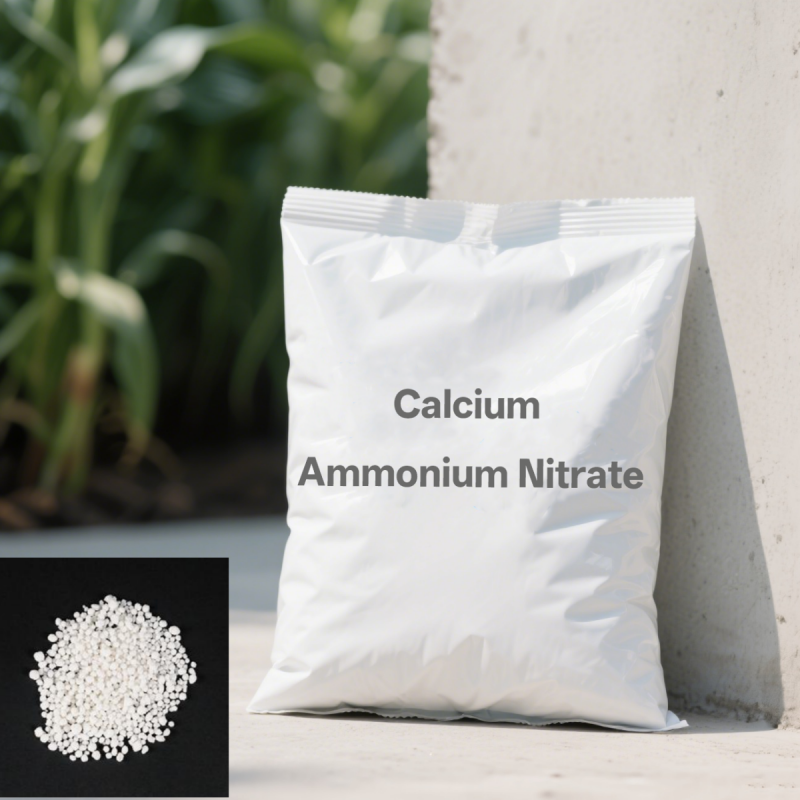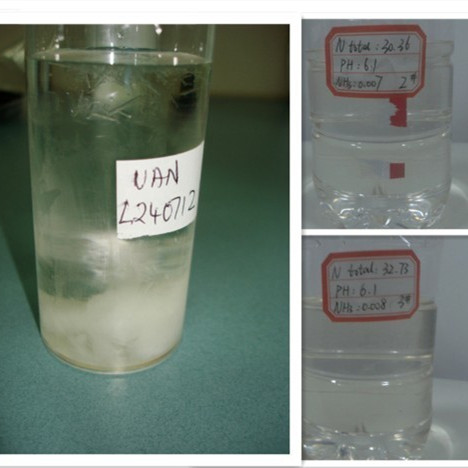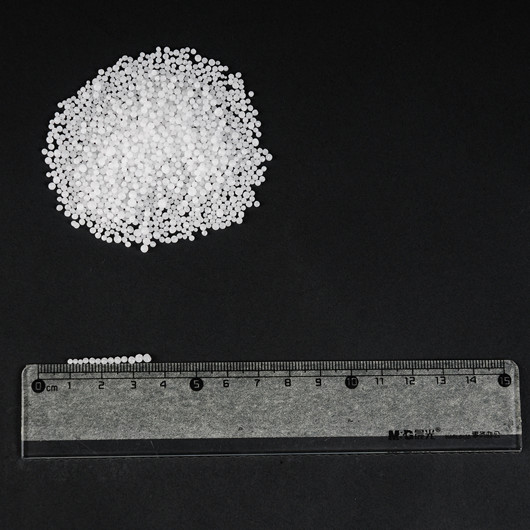Introduction
Calcium Ammonium Nitrate (CAN) is one of the most widely used nitrogen-based fertilizers in modern agriculture. Known for its stability, solubility, and balanced nutrient composition, CAN has become essential in boosting crop yields while maintaining soil health. With global population growth driving higher food demand, efficient fertilizers like CAN are increasingly important.
In this article, we will explore what Calcium Ammonium Nitrate is, its chemical composition, applications, benefits, research-backed performance data, and global market trends. We will also highlight San Corporation, China’s largest ammonium nitrate exporter, and a global leader in fertilizer innovation and supply.
What is Calcium Ammonium Nitrate?
Calcium Ammonium Nitrate (CAN) is a nitrogen fertilizer consisting of a mixture of ammonium nitrate (NH₄NO₃) and finely ground limestone (CaCO₃) or dolomite (CaMg(CO₃)₂). The product typically contains 27% nitrogen (half in nitrate form and half in ammonium form) and 6–8% calcium or magnesium carbonate.
Nitrate nitrogen (NO₃⁻): Immediately available for plant uptake.
Ammonium nitrogen (NH₄⁺): Provides a longer-lasting nutrient release.
Calcium and magnesium: Improve soil structure, reduce acidity, and strengthen plant cell walls.
Table 1: Typical Composition of Calcium Ammonium Nitrate
| Component | Percentage Range (%) |
|---|---|
| Ammonium Nitrate | 70–76% |
| Calcium Carbonate / Dolomite | 20–25% |
| Nitrogen (Total) | 26–28% |
| Moisture Content | ≤ 0.3% |
| Impurities | ≤ 0.5% |
This dual-action nitrogen source makes CAN highly effective across diverse soils and climates, offering both rapid and sustained plant nutrition.

Global Role of Calcium Ammonium Nitrate in Agriculture
CAN is widely used in Europe, Asia, Africa, and parts of South America as a stable nitrogen source. Unlike urea, it is less prone to volatilization (loss of nitrogen to the atmosphere), making it more efficient in nitrogen delivery.
Research Data: Fertilizer Use Efficiency
According to the Food and Agriculture Organization (FAO, 2022), CAN demonstrates higher nitrogen use efficiency (NUE) compared to urea and ammonium sulfate in most temperate regions.
Table 2: Nitrogen Use Efficiency by Fertilizer Type
| Fertilizer Type | Average NUE (%) | Notes |
|---|---|---|
| Urea | 45–50 | Higher volatilization losses |
| Ammonium Sulfate | 50–55 | Effective but acidifies soil |
| Calcium Ammonium Nitrate | 60–70 | Balanced release and soil buffering |
CAN not only improves nitrogen uptake but also helps mitigate soil acidification, making it a preferred choice in sustainable agriculture.
Benefits of Calcium Ammonium Nitrate
Balanced Nitrogen Release
Provides immediate nitrate nitrogen and sustained ammonium nitrogen.
Enhances crop growth stages from early vegetative to grain filling.
Soil Health Improvement
Calcium carbonate neutralizes soil acidity.
Improves soil structure and root development.
Higher Yield and Quality
Field trials show 8–15% higher crop yields when using CAN compared to urea.
Environmental Advantages
Lower greenhouse gas emissions compared to urea.
Reduced nitrogen leaching due to calcium binding.
Storage and Handling Safety
More stable than pure ammonium nitrate.
Lower risk of detonation, making it safer for transport.
Research Data: Yield Improvements
A multi-year study (2018–2021) conducted in Shandong Agricultural University, China, compared yield increases from CAN and urea applications in maize and wheat.
Table 3: Yield Performance of CAN vs Urea
| Crop | Fertilizer | Yield Increase (%) vs Control | Grain Protein (%) |
|---|---|---|---|
| Wheat | Urea | 11.2 | 12.5 |
| Wheat | CAN | 15.6 | 13.8 |
| Maize | Urea | 9.8 | 10.2 |
| Maize | CAN | 14.3 | 11.7 |
The data shows that CAN provides better yield improvements and higher grain protein content, reflecting its efficiency in both growth and nutritional quality.
Industrial and Non-Agricultural Applications
While agriculture is the main sector for CAN, it also has other uses:
Explosives Industry: CAN is used as a stabilizer in ANFO (Ammonium Nitrate Fuel Oil) mixtures.
Soil Remediation: Calcium carbonate in CAN helps rehabilitate acidic soils.
Specialty Chemicals: Utilized in controlled reactions requiring stable nitrate sources.
Global Market Trends of Calcium Ammonium Nitrate
The global fertilizer market is projected to grow steadily, with CAN maintaining a strong position in Europe, Africa, and Asia.
Table 4: Global Fertilizer Market Trends (2021–2026, CAGR)
| Fertilizer Type | CAGR (%) | Main Growth Regions |
|---|---|---|
| Urea | 2.8 | Asia-Pacific, Middle East |
| Ammonium Sulfate | 2.5 | South America, Africa |
| Calcium Ammonium Nitrate | 3.4 | Europe, Africa, Asia |
| Urea Ammonium Nitrate (UAN) | 4.0 | North America, Europe |
CAN’s CAGR of 3.4% indicates its growing importance as a balanced fertilizer, especially in regions with acidic soils.
San Corporation: Leading the Future of Calcium Ammonium Nitrate
When discussing Calcium Ammonium Nitrate, it is essential to highlight global producers that shape the market. San Corporation, founded in 2002 and headquartered in China, stands as the largest ammonium nitrate exporting enterprise in China and a trusted global supplier.
Company Strengths:
Production Capacity: Annual output of 1.2 million tons of ammonium nitrate.
Technology Leadership: Introduced patented technologies from Germany, Japan, France, and Norway.
Product Range: Fertilizers, chemicals, military-grade products, and specialty gases.
Export Reach: Supplies products worldwide, serving agriculture, industry, and defense sectors.
Product Excellence in CAN:
San Corporation’s Calcium Ammonium Nitrate is known for:
Superior granulation and uniform particle size.
Low moisture and high stability.
Consistency in nitrogen release for diverse crops.
By leveraging innovation and strict quality control, San Corporation ensures its CAN remains cost-effective, high-quality, and globally competitive.
Sustainability and Future of CAN
With global agriculture shifting toward climate-smart farming, fertilizers like CAN are gaining importance. Research shows that CAN, compared to urea, results in 30% lower nitrous oxide (N₂O) emissions, making it a better choice for environmentally responsible farming.
Future innovations, including coated CAN fertilizers and precision agriculture integration, will further enhance efficiency and sustainability. San Corporation, with its R&D-driven strategy, is well-positioned to lead these advancements.
Conclusion
Calcium Ammonium Nitrate is more than just a fertilizer—it is a cornerstone of sustainable agriculture, offering balanced nitrogen delivery, soil health benefits, higher yields, and environmental advantages. Supported by extensive research data, CAN consistently outperforms urea and ammonium sulfate in efficiency and crop performance.
With the increasing demand for efficient and sustainable fertilizers, San Corporation continues to stand at the forefront, delivering high-quality Calcium Ammonium Nitrate and related products to global markets. By combining technological innovation, large-scale production capacity, and international expertise, San Corporation ensures its customers receive the highest quality products at the lowest cost with the most secure service. Welcome to contact San Corporation to purchase ammonium nitrate products in bulk.



